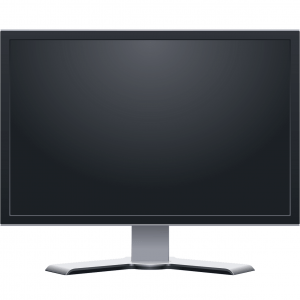Why is my screen still black A digestible blog on common render issues and what their cause could be
Part 2
If you are here from Part 1, welcome back. If you are wondering why we started at Part 2, go to Part 1.

Uncanny Valley!
So, you tried everything from the first part (that was relative to you), and your screen is still a backlighting test? No problem. (Well.. I mean, clearly there is but you know what I mean) We’ve gathered another five reasons this could be happening and how to go about fixing them.
Issue 6: Directional light is pointing in the wrong direction.
There are a few choices when it comes to choosing a light source for your scene. You can even add more than one. So we have Point lights, Directional lights, Spot lights and Area lights. You can then also have emissive textures that will act as a light source. Some of these get tricky… say, if you have a Spot or Directional light, you have to make sure they are pointing at something. For testing, you can always have a point light in the scene but even with these, you have to make sure they won’t be ‘inside’ an object, aren’t black and have a decent brightness.
Issue 7: It’s so dark in here. Did you not turn any lights on?
If using a lighting model, ensure the lights are actually enabled. A good test here is to set a temporary glClearColor (eg pink) – this will usually show un-lit geometry as black. Another solution is to set an ambient colour term and/or changing the background colour to something lighter.
Issue 8: Are you supplying enough power to your Raspberry Pi 4?
The Raspberry Pi 4 has dual HDMI outputs. Using the Qt EGLFS backend, these are available as different displays – so can run two different Qt applications, one full-screen on each. But if your system is near the limits of its power supply (and the onboard power monitor is quite picky, on the Pi) – the second display might fail to initialise. When debugging this problem, we initially tested different OpenGL backends and QPA plugins, but none of these made any difference. Very occasionally both displays would work, but mostly the second one would fail to initialise with an EGL error. A beefier power supply fixed the problem immediately. (Sometimes, it’s really not a software problem)
Issue 9: The GL context won’t create.
This can happen for instance if you upgrade your drivers (especially common with Linux and NVidia cards) and don’t reboot, there’s a high chance that your system won’t be able to create a GL context anymore. To make sure that this is the issue, start a simple 3D program such as glxgears. If it does not work, only one solution : reach for that restart button.
For more info, see: Checkliste Allgemein (German)
Issue 10: Return of the mac. – You’re using the wrong profile
OpenGL has been around for a while and has many version. Maybe you are using something that requires a more recent version of OpenGL? One thing that is more subtle, especially when updating old code to more modern practices, is the concept of profile. As of 3.2, contexts can be created with a Core profile or a Compatibility profile. The latter preserves compatibility with older fixed function pipeline code and settings. However, it is optional for drivers to implement that profile. Apple, in its wisdom, has decided not to do so. So if you ask for a Compatibility profile, it will create a 2.1 context, and you will not be able to use 3.0 or later features.
So, make sure Core profile is enabled, on the default QSurfaceFormat instance.
Other cross-platform issues are quite common. For example, NVIDIA drivers tend to be forgiving and accept using texture2D() in shaders even though it should not be allowed in a Core profile. So test on as many platforms and driver setups you can lay your hands on.
Once you’ve double checked the camera settings, shaders and your model settings, 6, 7, 8, 9, and 10, you should be good to go! If not, why not comment your issue below and we’ll try to get it in the next part.
If you like this article and want to read similar material, consider subscribing via our RSS feed.
Subscribe to KDAB TV for similar informative short video content.
KDAB provides market leading software consulting and development services and training in Qt, C++ and 3D/OpenGL. Contact us.